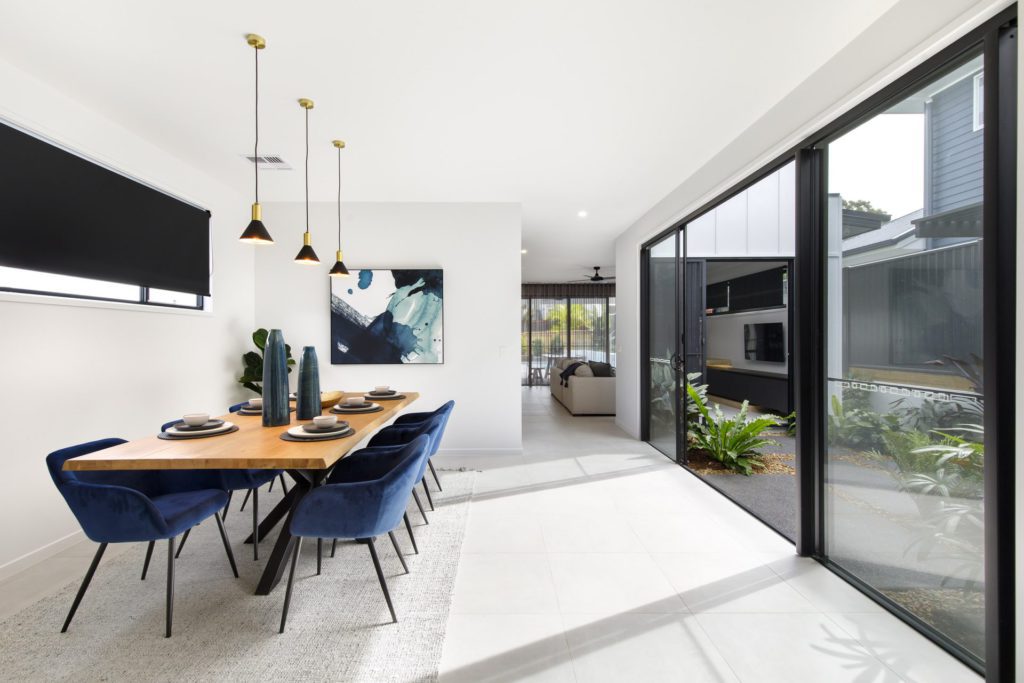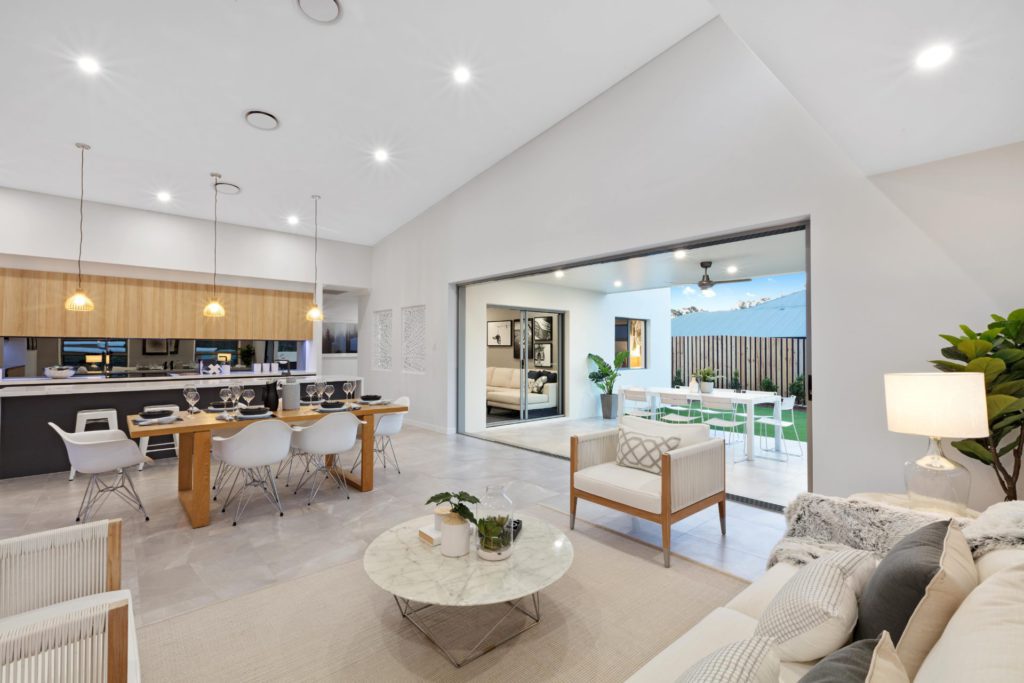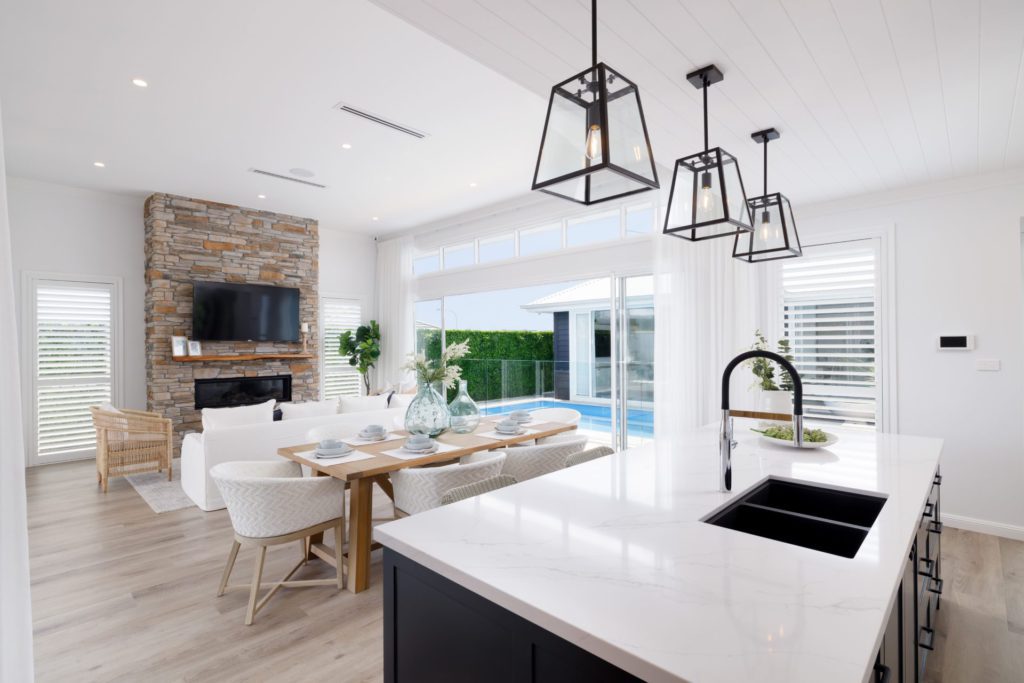Sustainable Homes
How To Build A Sustainable Home
Building a more sustainable home means making a contribution to improving the environment. But that’s not all. Eco-friendly home design can lower the cost of running your home, saving energy, water and maintenance on systems and appliances.
From orientation to building materials and solar power, there’s a lot to consider when it comes to building a sustainable house. This article will provide an overview of sustainable house features, along with ways to incorporate sustainable design elements into your new home build or renovation.
What is a sustainable home?

A sustainable home is designed in a way that respects natural resources by optimizing energy and water use; a home that includes quality systems that ensure durability and uses low-impact, high-performance materials that are efficient in terms of manufacturing, shipping and installing.
In the early stages of planning a new build, features such as location, size and orientation should be looked at closely. For example, a more sustainable design will take advantage of natural light and airflow to heat and cool the home naturally. This consideration will produce long term benefits for both the household and the environment by reducing the energy consumption of cooling and heating systems.
The same applies to the size and layout of the home. Smaller homes are notably more efficient, use fewer materials to build and require less energy to run. Small homes aren’t the best option for all; however, when building a sustainable home, it’s important to respect your resources and think about how much space you actually need to live comfortably and not excessively.
The benefits of building a sustainable house are ongoing and worthwhile if your aim is to reduce waste and improve your energy and water consumption. In addition to this, designing and building with a long-term mindset will help you to significantly increase the lifespan of your home. Durable, quality building materials and sustainable design features will ensure your sustainable home is built for the future.
How do I incorporate sustainable design into my home?

More than just a trend, sustainable design is becoming the future for many homes in Australia, and rightfully so.
Sustainable design, building materials and methods are crucial to the overall outcome of your home’s efficiency; however, there are other elements to consider when planning the details.
Passive solar design
Passive design takes the existing environment into account to create more efficient spaces. Work with your orientation to take advantage of natural light and maintain a comfortable temperature in your home.
High-performance windows
Windows are responsible for over 50% of lost energy in homes. When building a sustainable house, consider new technologies such as double glazing, special coatings and nonconductive frames. You can also tailor your window choice to the climate you live in. Low solar gain windows and double glazing are great for warmer climates, while insulated frames, triple-glazed windows and designs that eliminate drafts are best for colder climates.
Energy-efficient appliances
Think long term when furnishing your new sustainable home. Appliances with high energy ratings might be more expensive on the shop floor, however, they’ll save you a lot of money in the grand scheme of things. Pay close consideration to your kitchen and laundry appliances, and central heating.
A drip irrigation system for plants
It’s no surprise that eco-friendly houses are surrounded by a greener landscape. However, could the upkeep be costing you and the environment more than it’s worth? Reap the benefits of a beautiful garden without the guilt, by integrating a drip irrigation system, which uses gravity to deliver water to plants through the roots.
Using eco paints and water-based paints
When painting your home, opt for a low VOC paint that is better for your home and the environment. Eco-paints are less toxic to manufacture and will improve the indoor air quality of your home.
Renewable energy solutions
Talk to your energy supplier about renewable energy solutions. Rooftop solar panels are taking Australia by storm, and they could have huge benefits for your home and lifestyle. Your home could completely or partially operate off clean, renewable energy, which is positive for the planet and your power bill.
Recycle and reuse construction waste
Recycle where possible during construction and consider what materials can be saved and used in the future. You can also sell building materials that have residual value instead of sending them straight to landfill.
Install a cool roof
Cool roofs reflect the sun’s heat rather than absorb it, which can have a great cooling effect on your home interior.
Install a smart meter
Smart home systems aren’t just convenient, they’re incredibly useful for energy efficiency. Smart meters can connect to and control your appliances to automate specific tasks such as turning devices on and off at certain times.
Insulate your home properly with eco-friendly materials

New home insulation is incredibly important and one of the major features of sustainable houses. Good insulation will keep hot air out in summer and warm air in during winter. This increases a home’s energy efficiency by reducing the need for air conditioning and heating.
There is a common misconception that more sustainable homes are also more expensive to run and maintain. However, this isn’t the case! Eco-friendly houses benefit the environment, as well as your finances, and this applies to both the build and beyond. Sustainable design elements are easy to include in your new build and can put you on the path to living a greener lifestyle.
When it comes to building a sustainable home, you’re building with the future in mind. Consider your energy use, location, insulation and building materials and how they can be used to create a home that will positively impact your lifestyle in the long run.
If you want to learn more about sustainable home design or you’re interested in building a sustainable house, get in touch with your local G.J. Gardner office today.
